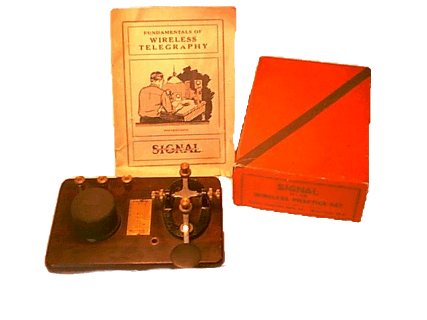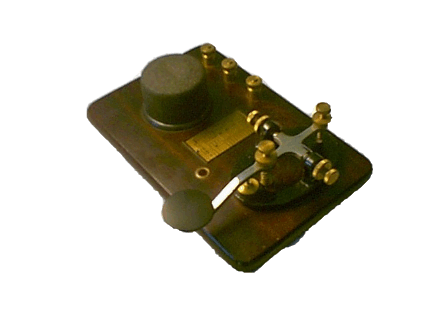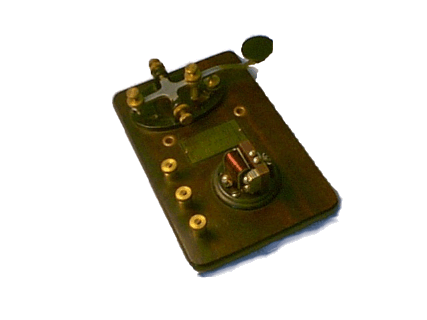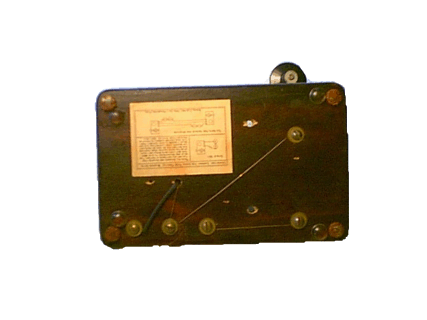Signal Electric
Mfg. Co.
|
R-68 Wireless Practice Set
Manufactured Early- to Mid- 1930's |
|
(The following
description is taken from the "Fundamentals of Wireless
Telegraphy" booklet included with their practice sets)
"Designed
for those who want a well made instrument to learn the code. Set
consists of a key and high frequency buzzer mounted on a mahogany
finished wood base equipped with binding posts. The code is
printed on a plate and fastened to the base between the key and
buzzer. Buzzer is adjustable.
List $3.00"
|

|
|
Front
View |
| The large round object on the left side
of the wood base is the buzzer. Behind the buzzer are three
binding posts, and between the buzzer and the key is a brass plate,
showing a visual representation of the International Morse Code, using
"dots" and "dashes" to represent the "dit"
and "dah" that make up the sound of morse code.
Note that it is now generally accepted that learning morse code
by seeing it is a bad idea - learning that way will hinder
your ability to listen to and recognize - or "copy" -
morse code beyond a few words per minute, which is very slow. To
copy code at a comfortably usable rate - 30 words per minute or even 40
plus words per minute, you need to learn the code by hearing
the sound and rhythm of the characters, numbers and special abbreviations
and characters called prosigns. |
 |
| Rear
View |
| Here I removed the cover from the
buzzer. Notice too that there are three binding posts; the third
(middle) post was for connection to a second practice set so that the
users could practice both sending and receiving morse code with each
other. |
 |
|
Bottom
View |
| The bottom of this key still has the
original rubber pads in the four corners, however by now they are hard
and allow the key to slide around the desk making it difficult to send
morse code. You may just be able to see where I added new clear
pads so that I can use the key without it getting away from me.
The piece of paper attached to the bottom is the instructions for
attaching the dry cell batteries, and for connecting two keys together. |
 |


